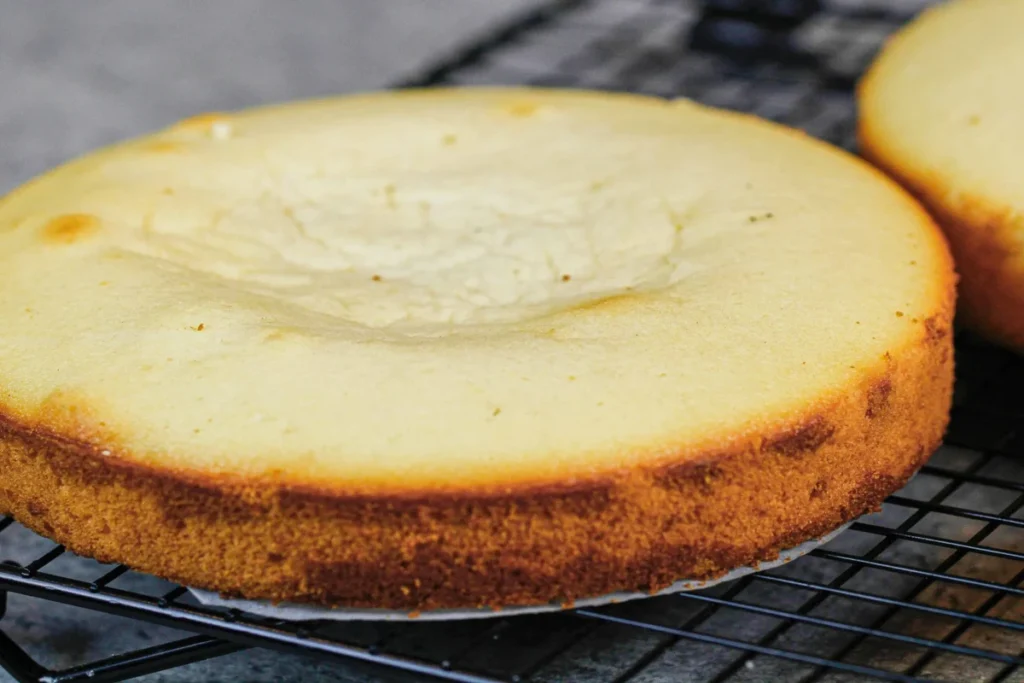
Ciabatta bread, with its crusty exterior and soft interior, is a beloved staple in many households. However, the frustration of discovering a stale loaf is not uncommon. In this blog, we’ll explore six simple ways to revive stale ciabatta bread, ensuring that every bite is as delightful as the first.
Table of Contents
Toggle4 Signs of Stale Ciabatta Bread
Ciabatta bread, with its charming rustic appeal and delicious taste, is a top pick for bread lovers. Yet, even the finest ciabatta can lose its freshness, affecting both its texture and flavor. So before we go to fixing, it’s important to know the signs of stale ciabatta.
- Tough Crust: One of the main signs of stale ciabatta is a hard crust. Fresh ciabatta has a crisp crust that gives way gently to the touch. When it goes stale, the crust becomes tough and unyielding. Running your fingers over the bread’s surface can reveal a noticeable difference between the softness of a fresh loaf and the stiffness of one past its prime.
- Lack of Bounce: Ciabatta is known for its unique texture – soft and airy inside with a chewy crust. As it gets older, the bread loses its bounce. Fresh ciabatta should spring back a bit when lightly pressed. Stale ciabatta, on the other hand, tends to keep the indentation, showing that it’s no longer as supple as it should be.
- Stale Smell: A key indicator of fresh ciabatta is its inviting aroma, a pleasant mix of yeast and wheat. Unfortunately, stale ciabatta has a distinct musty odor. If your loaf doesn’t give off that delightful yeasty fragrance anymore, it’s likely seen better days. Trust your sense of smell; it’s a reliable guide to the overall quality of the bread.
- Crumbly Interior: The inside of the ciabatta should have an open crumb structure—airy and filled with holes. Stale ciabatta, however, undergoes a change in texture. Instead of the desirable, holey structure, it becomes crumbly and dry. When you notice the disappearance of that delightful chewiness and the emergence of a more brittle consistency, it’s a clear sign of staleness.
Why You Should Revive Stale Bread Instead of Throwing it Away
We’ve all been there – that disappointing moment when you find out your eagerly awaited ciabatta bread has gone stale. It’s tempting to toss it in the trash and head to the bakery for a fresh one, but before you do, think about why bringing stale bread back to life is not just a practical choice but also an eco-friendly one.
First off, reviving stale ciabatta saves you money. Artisanal bread can be pricey, and throwing it away too soon feels like wasting cash. By using simple tricks like misting with water and reheating, you can revive your ciabatta and make sure your investment doesn’t go down the drain.
Besides the money angle, bringing stale bread back is good for the environment. With people becoming more aware of the environmental impact of food waste, every small effort to cut down on waste counts.
Tossing bread adds to the overall food waste issue, contributing to landfills and greenhouse gas emissions. Choosing to revive stale ciabatta is a small but meaningful step toward sustainability.
What’s more, bringing stale bread back to life lets you get creative in the kitchen and discover the versatility of this seemingly ordinary ingredient. Stale ciabatta can become croutons for salads, breadcrumbs for coatings, or even the star of a bread pudding.
Taking on the challenge of giving your bread a new life sparks creativity and resourcefulness in the kitchen, turning a potential setback into a culinary adventure.

How To Fix Stale Ciabatta Bread in 6 Simple Ways
In pervious Section I share 4 signs of stale ciabatta now its time to fix your stale ciabatta bread with these 6 simple methods.
1. Moisture Magic: Mist and Wrap
Reviving stale ciabatta is all about bringing back its moisture. Stale bread often loses its original moisture, making it feel unappetizing. To fix this, start by spritzing the ciabatta with water. A light mist helps hydrate the crust and inside without making the bread too wet.
After misting, wrap the ciabatta in a damp cloth. This creates a small environment that helps the bread absorb moisture without messing up the crust. Let the wrapped ciabatta sit for a bit, and you’ll see a big improvement in its texture.
2. Heat Rejuvenation: Oven vs. Microwave
If misting isn’t your thing, try using heat to revive stale ciabatta. Whether you choose an oven or a microwave depends on your preference.
- Oven Method: Preheat your oven to around 350°F (175°C). Sprinkle a bit of water on the ciabatta or wrap it in a damp cloth. Put the ciabatta right on the oven rack for a few minutes. This gives you a crispy crust and a refreshed interior.
- Microwave Method: For a softer result, go for the microwave. Sprinkle a little water on the ciabatta or put a damp paper towel nearby. Microwave the bread in short bursts, checking often until you get the texture you want.
3. Unconventional Hacks: Steaming Solutions
Thinking beyond the usual methods, steaming is an unusual but effective way to revive ciabatta. Steam helps add moisture without messing up the bread’s structure.
To steam stale ciabatta, heat water in a pot or a steamer. Once there’s steam, hold the ciabatta over it for a short time. Be careful not to overdo it, as too much steam can make the bread soggy. This method is great if you like a softer crust.
4. Culinary Transformations: Recipes for Stale Ciabatta
Stale ciabatta doesn’t have to be a letdown; it can be a chance to get creative in the kitchen. Turn your stale ciabatta into tasty dishes like croutons, breadcrumbs, or panzanella salads.
- Croutons: Cut the stale ciabatta into cubes, toss them in olive oil and seasonings, and bake until they’re golden brown. These homemade croutons are perfect for salads or soups.
- Breadcrumbs: Grind stale ciabatta in a food processor to make breadcrumbs. Use them as a crispy coating for chicken or fish.
- Panzanella Salad: Mix stale ciabatta cubes with tomatoes, cucumbers, and fresh herbs. Dress it with olive oil and vinegar for a refreshing panzanella salad.
5. Storage Strategies: Preventing Staleness
Prevention is often the best solution, and it’s true for ciabatta staleness too. Using the right storage techniques can significantly extend your ciabatta’s freshness.
- Airtight Containers: Keep ciabatta in airtight containers to reduce exposure to air and prevent quick moisture loss.
- Refrigeration: In warmer places, think about refrigerating ciabatta. Make sure to wrap it properly to stop it from drying out.
6. Knowing When to Say Goodbye: Identifying Spoilage
While there are many ways to revive ciabatta, it’s crucial to know when to let go. Signs of spoilage, like mold or a strange smell, mean the bread is past its prime. Recognizing these signs ensures you make informed decisions about when to toss it instead of trying to revive it.

Common Mistakes To Avoid When Fixing Stale Ciabatta Bread
So, I’ve been trying to bring stale ciabatta back to life, and let me tell you, I’ve made a few mistakes along the way that, looking back, were totally avoidable. Let’s talk about the common slip-ups you might run into when trying to revive that once-crunchy bread.
First off, there’s this strong urge to soak the ciabatta like it’s some kind of magical fix. I fell into that trap, thinking more water would do wonders. Turns out, I just ended up with a sopping mess. Lesson learned: keep it in check, don’t go overboard.
Another big deal is figuring out the right balance between using the oven and the microwave. Blast that bread too long in the oven, and it transforms from a potential savior to a crouton in a snap. And don’t even get me started on nuking it in the microwave – too much, and you’re stuck with something rubbery. It’s a tricky balance, needing some patience and watchfulness.
While I was messing around with some not-so-traditional tricks, like steaming, impatience got the best of me. Rushing the steaming part turned my bread into something more like a wet sponge than the light ciabatta I was craving.
Lastly, here’s the big no-no: ignoring signs that your ciabatta has gone bad. Trying to save a truly spoiled one is a lost cause. If you spot mold or catch a whiff of a musty smell, it’s time to say goodbye.
Frequently Asked Question (FAQS)
How do you revive stale ciabatta bread?
To revive stale ciabatta, spritz it lightly with water, wrap it in aluminum foil, and bake at 350°F for 10 minutes. This helps to restore moisture and crispiness to the crust, giving the bread a fresher texture.
How do you reactivate stale bread?
Reactivating stale bread involves moistening it slightly, either with water or a damp cloth. Then, heat the bread in an oven or microwave to rejuvenate its texture. This process helps to regain some of the original freshness.
How do you soften hardened bread?
Softening hardened bread involves wrapping it in a damp kitchen towel and microwaving in short bursts until it reaches the desired softness. Alternatively, you can place the bread in a sealed plastic bag with a damp paper towel and leave it overnight.
Can you reverse stale bread?
While you can’t truly reverse staleness, you can refresh stale bread by sprinkling it with water and reheating in the oven. This process temporarily restores moisture, making the bread softer and more palatable.
Final Thoughts
In conclusion, reviving stale ciabatta bread is not only a practical solution but also an eco-friendly choice. Recognizing the signs of staleness—tough crust, lack of bounce, stale smell, and crumbly interior—is the first step.
Instead of discarding it, employ simple methods like moisture magic with misting and wrapping or heat rejuvenation through oven or microwave. Unconventional hacks like steaming and turning stale ciabatta into culinary delights add a creative flair. Storage strategies and knowing when to say goodbye are crucial.
Avoid common mistakes like excessive soaking and finding the right balance between oven and microwave use. Transforming a setback into a culinary adventure fosters both resourcefulness and sustainability.
Lindsey Mackenzie
About me
Hi there! I’m Lindsey Mackenzie, the founder of Bake Smartly. Baking has been my passion since childhood, growing up in my father’s bakery. With Bake Smartly, I’m excited to share my love for all things sweet and savory. Join me on this delicious journey as we whip up scrumptious treats and sprinkle joy into every bite!






